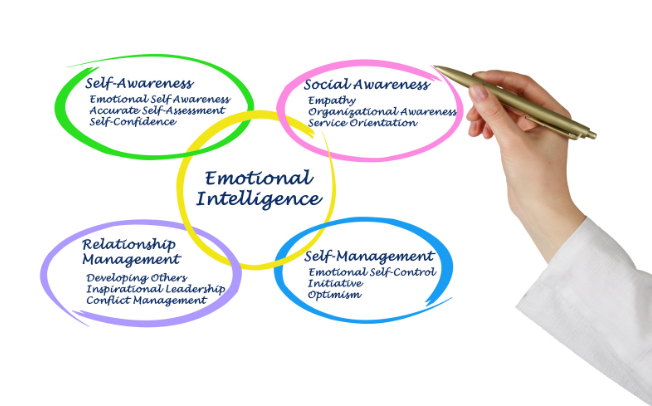Introduction
Whether you consider yourself a leader or not, there is one leadership skill you use multiple times a day: Negotiation. We negotiate more often than we realize: deciding who will pick up the kids; resolving a scheduling conflict; discussing a deadline at work; or determining who goes first at a stop sign.
Though seemingly small, these moments are opportunities to improve our negotiation skills. As part of everyday communication, negotiation is far more than a back-and-forth exchange to get what we want from people. It is a dynamic interaction that calls on our ability to understand others, manage our emotions, and communicate effectively.
It also calls for significant brain energy. During negotiations, our brains allow us to assess each situation quickly, empathize with others while considering our interests, and respond in ways that help us navigate complex interactions. Neuroscience shows us that negotiation is deeply rooted in brain function, with specific areas working to interpret social cues, manage stress, and maintain focus on our goals.
This article will explore how neuroscience shapes the negotiation process. It connects negotiation with topics like managing emotions, building trust, and finding creative solutions. Rather than citing primary research articles – which can be dense and less practical for everyday use – I draw on my background as a neuroscientist and my professional experience to provide insights and practical strategies. This approach ensures the information is clear, accessible, and directly relevant to real-world scenarios.
Inside Your Brain: How Neuroscience Shapes Negotiation
At a neurological level, negotiation is a balancing act involving multiple areas of the brain. Imagine a conversation with your boss about a raise. You present your achievements while at the same time observing their reactions and adjusting your tone accordingly. The prefrontal cortex is essential in this process, helping you weigh potential outcomes, make decisions, and manage impulses. This part of the brain, responsible for planning and reasoning, keeps us grounded and composed when discussions become tense, especially when the stakes are high.

At the same time, brain regions linked to empathy – such as those activated by mirror neurons – help us tune in to other people’s emotions, an essential skill for building trust and rapport. These regions also allow us to interpret social cues in real time. For example, we might adapt our negotiation approach after noticing a shift in the other party’s body language, tone, or facial expression.
Neuroscience helps us understand how the brain drives our actions, decisions, and thoughts. When it comes to negotiation, it shows how different parts of the brain work together to help us think clearly, stay calm, read others’ emotions, and adjust our approach on the spot to handle tricky conversations and reach better agreements.
Boost Your Negotiation Skills with Emotional Intelligence

At the heart of effective negotiation lies self-awareness – a key component of emotional intelligence and a foundation for personal and professional mastery. Self-awareness enables us to recognize and manage our emotions. Yet, it is just one piece of the puzzle. Emotional intelligence frameworks, like the EQ-i 2.0 model, remind us that negotiation also relies on empathy, social awareness, and relationship management. Together, these elements help us navigate the complexity of personal and social interactions, increasing the likelihood of achieving mutually beneficial outcomes.
A personal experience brought this to life for me a few weeks ago. I hired a construction crew to replace my driveway, but near the end of the job, they ran out of asphalt and decided to return the next day to finish. This concerned me because I suspected that stopping and restarting would leave the driveway discolored in the area completed later, creating a patchy, uneven look instead of a smooth, uniform finish. When I shared my concern, they agreed with my assessment but assured me that applying a seal coat the following year would address any discoloration or cosmetic imperfections. Despite their reassurance, I still felt uneasy.

As the situation unfolded, I consciously tried to tune into my emotions. I asked myself:
“What am I feeling?”
“Why am I feeling this way?”
I realized I was frustrated and distrustful – not because of anything this contractor had done, but because I was projecting feelings from past experiences where I felt taken advantage of. Recognizing this helped me manage my reaction and approach the discussion calmly.
But self-awareness was only the beginning. Empathy allowed me to see the situation from the contractor’s perspective – understanding their challenges and trusting their intention to provide a quality solution. Social awareness helped me pick up on subtle cues in their tone and body language, which suggested they genuinely wanted to address my concerns. Building on this, relationship management enabled me to steer the conversation toward a resolution that balanced their expertise with my expectations and maintained a constructive dialogue rather than allowing tension or mistrust to derail the discussion.
When I shared my underlying concern – that I expected and desired a smooth, clean finish, especially after recently completing other exterior updates to the house, including new siding and landscaping – the contractor listened and acknowledged my point. They offered to delay payment until I was satisfied with the final outcome and included a complimentary seal coat when the weather allowed. While I appreciated their offer, I decided not to delay payment because my concern was purely cosmetic, not structural. They had done an excellent job on the critical parts of the work, and I felt confident in their ability to address the cosmetic issue as promised.
This experience reminded me that negotiation is never just about exchanging words – it also involves navigating emotions, discovering both parties’ interests, and managing relationships. Emotional intelligence boosts negotiation skills by helping us stay attuned to our own emotions, recognize and empathize with the emotions of others, and adapt to social dynamics in real time. Whether it’s maintaining composure under pressure, building trust through empathy, or adjusting to unspoken cues in the moment, emotional intelligence provides the foundation for successful, collaborative negotiations that achieve meaningful outcomes.
Practical Brain-Based Strategies for Negotiation
Understanding how your brain and emotional intelligence work during negotiation can help you approach discussions with clarity and intention. The strategies below draw from neuroscience and emotional intelligence principles, offering practical tools to navigate negotiations at every stage.
1. Start with Self-Awareness
Effective negotiation begins before the conversation starts. Take time to reflect on your goals and emotions. Ask yourself:
- “What do I hope to achieve?”
- “What concerns or assumptions might I bring into this conversation?”
This preparation helps you identify your priorities and any potential triggers. When tension rises or the stakes increase during the discussion, self-awareness becomes your anchor. Pause and ask:
- “What am I feeling, and why?”
- “How do I want to respond to stay focused on my goals?”
This approach keeps you grounded, and helps you to manage your emotions and reactions with intention.
2. Listen with Empathy
Active listening is essential for building trust. Pay attention to not only what the other person is saying but also the emotions behind their words. Reflecting back what you heard shows that you value their input and helps clarify their perspective. For example, you might ask:
- “It sounds like timing is really important to you – did I get that right?”
- “When you say this solution isn’t ideal, can you help me understand what would work better for you?”
This creates a sense of collaboration and increases the likelihood of a positive outcome.
3. Use Social Awareness to Read the Room
As mentioned above, negotiation isn’t just about what you say – it is also about what you notice. Observe body language, tone of voice, and subtle shifts in expression. These nonverbal cues can provide valuable insights into the other party’s emotions and interests. For instance, imagine discussing a project timeline with a colleague. As you propose a deadline, you notice them frowning slightly and crossing their arms. Instead of pushing ahead, you could pause and say:
“I just want to check in with you and confirm that this timeline aligns with your priorities – is this okay or would something else work better for you?”
Picking up on these signals and addressing their interests directly improves connection and communication, keeping the conversation constructive.
4. Adapt with Cognitive Flexibility
Sometimes, things don’t go as planned in a negotiation. New information might come up, or the other person might challenge your initial proposal. Instead of getting stuck or defensive, cognitive flexibility helps you stay open to new ideas and adjust your approach. It’s about being able to rethink your position and find a solution that works for everyone. For example, imagine you’re negotiating a contract with a client, and they suddenly mention a new requirement that wasn’t in the original plan. Rather than pushing back, you could say:
“That’s a good point—let me take another look and see how we can work this in while staying on track.”
This kind of adaptability shows that you are willing to collaborate and keeps the conversation moving forward.
5. Manage Emotions with Intention
Emotions are a natural part of negotiation, but they can derail conversation if left unobserved and unchecked. Managing your emotions means staying calm and focused, even when the discussion gets tense. Simple techniques like taking deep breaths, pausing before responding, or even asking for a quick break can help you stay in control.
For example, if a disagreement starts to heat up, instead of reacting impulsively, you might take a deep breath and say:
“Let’s take a step back and think this through.”
This keeps the conversation on track and shows you’re committed to finding a solution, not just winning the argument. Staying composed helps create a more collaborative and productive atmosphere for both sides.
The Key to Negotiating Like a Pro: A Proven System
Negotiation is about finding the right balance – being assertive while understanding the other person’s perspective and using logic and intuition to guide the conversation. Understanding how the brain works during negotiation can offer helpful insights, but success comes from a clear and practical approach. A sound system helps you stay organized, focused, and flexible, even when unexpected challenges arise.
With a structured approach, you can feel more prepared at every stage – enabling you to manage emotions better, uncover shared interests, or adjust to new information quickly. It provides the foundation for confidence and creativity, helping you handle negotiations with purpose and adaptability.

Imagine stepping into a negotiation with a clear plan for how to guide the conversation and read the dynamics, working toward a solution that benefits everyone involved. Whether navigating a workplace challenge, finalizing a business deal, or resolving a disagreement at home, having a system in place can make the process smoother and more effective.
I’d be happy to connect if you’re curious about how emotional intelligence and a structured approach can improve your negotiation skills. Let’s explore ways to make your next negotiation more effective and rewarding.
Feel free to add to the discussion in the comment section.
